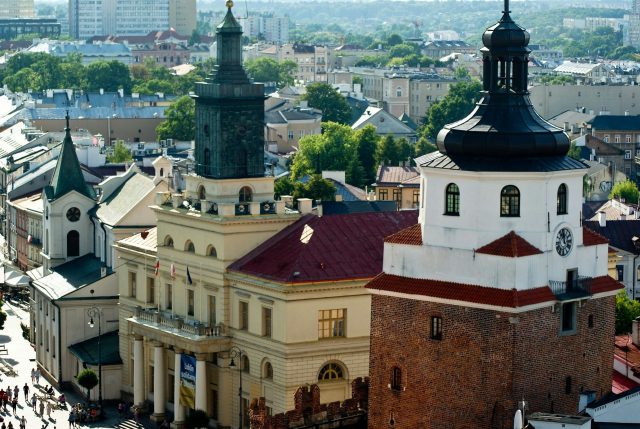In recent years, Central Europe has quietly emerged as one of the most attractive regions for machinery relocation and large-scale factory moves. Companies across Europe and beyond are increasingly choosing to move their industrial assets into the heart of the continent, taking advantage of its connectivity, skilled workforce, and favourable business environment. At the centre of this trend lies the Czech Republic, which has positioned itself as a strategic hub for manufacturers seeking efficiency, resilience, and long-term growth.
Central Europe’s Appeal for Industrial Relocation
Factory moves and machinery relocation are not decisions taken lightly. They require significant planning, investment, and confidence in the host region’s infrastructure. Central Europe offers compelling reasons for such moves, particularly for businesses looking to serve multiple markets within the EU.
Geographically, the region sits at the crossroads of Western and Eastern Europe. This makes it an ideal location for manufacturers that want to optimise distribution networks, reduce logistics costs, and maintain flexibility in supply chains. For industries ranging from automotive to heavy machinery, proximity to both established and emerging markets has become critical.
Additionally, Central Europe has benefitted from substantial EU investment in transport corridors, energy infrastructure, and digital connectivity. These upgrades have transformed the region into a modern industrial base that can rival more established Western European hubs.
The Czech Republic: Strategic Location at the Heart of Europe
The Czech Republic, often referred to as the “gateway to Europe,” stands out as the most significant driver of this relocation trend. Bordered by Germany, Poland, Austria, and Slovakia, it offers unrivalled access to major industrial and consumer markets. This strategic location makes it a natural choice for companies that need seamless connections across the continent.
Prague, Brno, and Ostrava are home to well-established industrial clusters, providing businesses with strong supplier networks and access to highly skilled labour. The country’s modern motorway and rail systems are directly linked to pan-European corridors, enabling the efficient transportation of machinery and manufactured goods. For companies relocating heavy equipment or setting up new production lines, this logistical advantage translates directly into lower costs and faster project timelines.
Cost-Effective Yet Skilled Workforce
One of the Czech Republic’s greatest strengths lies in its workforce. Manufacturing has been a central pillar of the Czech economy for decades, and the country boasts a long tradition of engineering excellence. This heritage has cultivated a pool of skilled technicians, engineers, and machine operators who are well-versed in complex industrial processes.
At the same time, labour costs remain competitive compared to those in Western Europe, striking a balance between affordability and expertise. For companies considering machinery relocation, this is a decisive factor: they can maintain high standards of productivity while keeping operational expenses under control.
Moreover, Czech universities and technical institutes continue to produce graduates in engineering, automation, and industrial design, ensuring a steady pipeline of talent to support advanced manufacturing operations.
Strong Industrial Sectors Attracting Relocations
The Czech Republic has already established itself as a leader in several industrial sectors, which in turn attracts further relocations and factory moves. The automotive industry is particularly robust, with global manufacturers like Škoda Auto playing a pivotal role in a vibrant supply chain ecosystem. Aerospace, precision engineering, and electronics are also thriving, creating synergies that benefit incoming businesses.
For companies relocating machinery, being close to these clusters offers significant advantages. Shared knowledge, access to specialist suppliers, and opportunities for collaboration make the Czech Republic an appealing environment for firms that want to hit the ground running.
Government Support and Investment Incentives
The Czech government has been proactive in encouraging foreign investment and industrial growth. Incentives such as tax relief, grants for job creation, and support for research and development make the relocation process more attractive. Policies aimed at strengthening advanced manufacturing and digital transformation closely align with the needs of companies that move sophisticated machinery and production assets.
Additionally, the Czech Republic’s membership in the European Union ensures regulatory stability, access to the single market, and harmonised standards — all essential factors for multinational manufacturers relocating production capacity.
Supply Chain Resilience and Nearshoring
Another key reason for Central Europe’s rise as a hub for relocations is the shift towards nearshoring. The disruptions of recent years, including the pandemic and geopolitical tensions, have highlighted the risks of relying too heavily on distant supply chains. Companies are now looking to bring production closer to their European customer base.
The Czech Republic offers exactly what they need: proximity to markets, efficient logistics, and robust infrastructure. By relocating machinery and operations to the region, firms can reduce transportation risks, shorten lead times, and enhance their ability to respond to changing market demands.
Why 2025 and Beyond Will Cement the Trend
The momentum behind machinery relocation to Central Europe is poised to accelerate further. With energy transition policies reshaping industries, manufacturers are seeking locations that strike a balance between cost efficiency and sustainability. The Czech Republic’s investment in renewable energy, green manufacturing, and digital automation makes it particularly well-positioned for the future.
Additionally, the continued expansion of industrial parks and special economic zones ensures that sufficient space and facilities are available for incoming projects. Combined with the country’s central position, it cements its role as the hub of choice for factory moves across the continent.













